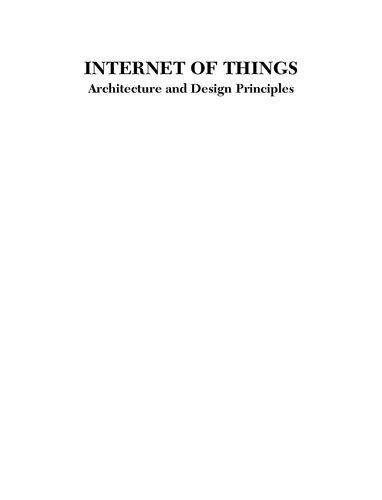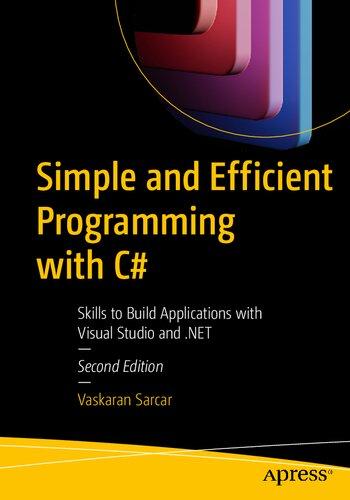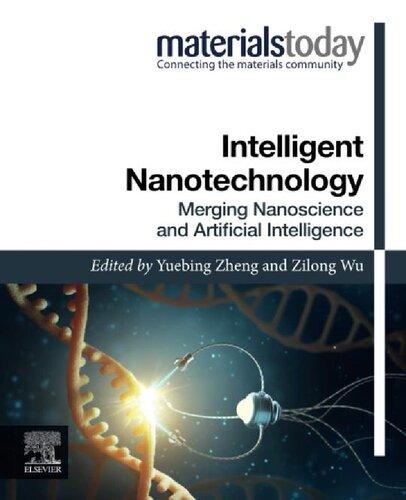TheInternetofThings
FromDatatoInsight
Editedby JohnDavies
BritishTelecommunicationsplc,Ipswich,UK
CarolinaFortuna
JožefStefanInstitute,Ljubljana,Slovenia
Thiseditionfirstpublished2020 ©2020JohnWiley&SonsLtd
Allrightsreserved.Nopartofthispublicationmaybereproduced,storedinaretrievalsystem,or transmitted,inanyformorbyanymeans,electronic,mechanical,photocopying,recordingorotherwise, exceptaspermittedbylaw.Adviceonhowtoobtainpermissiontoreusematerialfromthistitleisavailable athttp://www.wiley.com/go/permissions.
TherightofJohnDaviesandCarolinaFortunatobeidentifiedastheauthorsoftheeditorialmaterialin thisworkhasbeenassertedinaccordancewithlaw.
RegisteredOffices
JohnWiley&Sons,Inc.,111RiverStreet,Hoboken,NJ07030,USA
JohnWiley&SonsLtd,TheAtrium,SouthernGate,Chichester,WestSussex,PO198SQ,UK
EditorialOffice
TheAtrium,SouthernGate,Chichester,WestSussex,PO198SQ,UK
Fordetailsofourglobaleditorialoffices,customerservices,andmoreinformationaboutWileyproducts visitusatwww.wiley.com.
Wileyalsopublishesitsbooksinavarietyofelectronicformatsandbyprint-on-demand.Somecontentthat appearsinstandardprintversionsofthisbookmaynotbeavailableinotherformats.
LimitofLiability/DisclaimerofWarranty
Whilethepublisherandauthorshaveusedtheirbesteffortsinpreparingthiswork,theymakeno representationsorwarrantieswithrespecttotheaccuracyorcompletenessofthecontentsofthisworkand specificallydisclaimallwarranties,includingwithoutlimitationanyimpliedwarrantiesofmerchantability orfitnessforaparticularpurpose.Nowarrantymaybecreatedorextendedbysalesrepresentatives,written salesmaterialsorpromotionalstatementsforthiswork.Thefactthatanorganization,website,orproduct isreferredtointhisworkasacitationand/orpotentialsourceoffurtherinformationdoesnotmeanthat thepublisherandauthorsendorsetheinformationorservicestheorganization,website,orproductmay provideorrecommendationsitmaymake.Thisworkissoldwiththeunderstandingthatthepublisheris notengagedinrenderingprofessionalservices.Theadviceandstrategiescontainedhereinmaynotbe suitableforyoursituation.Youshouldconsultwithaspecialistwhereappropriate.Further,readersshould beawarethatwebsiteslistedinthisworkmayhavechangedordisappearedbetweenwhenthisworkwas writtenandwhenitisread.Neitherthepublishernorauthorsshallbeliableforanylossofprofitorany othercommercialdamages,includingbutnotlimitedtospecial,incidental,consequential,orother damages.
LibraryofCongressCataloging-in-PublicationDataAppliedfor HBISBN:9781119545262
CoverDesign:Wiley
Coverimage:Bangkokcityscape©MongkolChuewong/GettyImages,Internetofthings© MONOPOLY919/Shutterstock,Businessdatamarketelements©Macrovector/Shutterstock
Setin9.5/12.5ptSTIXTwoTextbySPiGlobal,Chennai,India
PrintedandboundbyCPIGroup(UK)Ltd,Croydon,CR04YY 10987654321
Contents
AbouttheEditors xi
ListofContributors xiii
Foreword xvii
Acknowledgments xix
1Introduction 1
JohnDaviesandCarolinaFortuna
1.1StakeholdersinIoTEcosystems 3
1.2HumanandIoTSensing,Reasoning,andActuation:AnAnalogy 4
1.3ReplicabilityandRe-useinIoT 5
1.4Overview 6 References 7
2ConnectingDevices:AccessNetworks 9
PaulPutland
2.1Introduction 9
2.2OverviewofAccessNetworks 10
2.2.1ExistingTechnologiesAreAbletoCoveraNumberofIoTScenarios 10
2.3Low-PowerWideAreaNetwork(LPWAN) 12
2.3.1Long-Range(LoRa)Low-PowerWideAreaNetwork 14
2.3.2SigfoxLow-PowerWideAreaNetwork 14
2.3.3WeightlessLow-PowerWideAreaNetwork 15
2.4CellularTechnologies 15
2.4.1Emerging5GCellularTechnology 16
2.5Conclusion 18 References 18
3EdgeComputing 21
MohammadHosseinZoualfaghari,SimonBeddus,andSalmanTaherizadeh
3.1Introduction 21
3.2EdgeComputingFundamentals 22
3.2.1EdgeComputeStrategies 22
3.2.2NetworkConnectivity 25
3.3EdgeComputingArchitecture 25
3.3.1DeviceOverview 25
3.3.2EdgeApplicationModules 26
3.3.3IoTRuntimeEnvironment 26
3.3.4DeviceManagement 27
3.3.5SecureRuntimeEnvironment 27
3.4ImplementingEdgeComputingSolutions 28
3.4.1StarterConfiguration 28
3.4.2DeveloperTools 28
3.4.3EdgeComputingFrameworks 29
3.5Zero-TouchDeviceOn-boarding 30
3.6ApplyingEdgeComputing 32
3.7Conclusions 33 References 33
4DataPlatforms:InteroperabilityandInsight 37
JohnDaviesandMikeFisher
4.1Introduction 37
4.2IoTEcosystems 38
4.3Context 40
4.4AspectsofInteroperability 41
4.4.1Discovery 41
4.4.2AccessControl 43
4.4.3DataAccess 44
4.5Conclusion 48 References 49
5StreamingDataProcessingforIoT 51
CarolinaFortunaandTimotejGale
5.1Introduction 51
5.2Fundamentals 52
5.2.1Compression 52
5.2.2DimensionalityReduction 52
5.2.3Summarization 53
5.2.4LearningandMining 53
5.2.5Visualization 53
5.3ArchitecturesandLanguages 54
5.4StreamAnalyticsandSpectrumSensing 56
5.4.1Real-TimeNotifications 57
5.4.2StatisticalReporting 57
5.4.3CustomApplications 58
5.5Summary 59 References 60
6AppliedMachineVisionandIoT 63
V.García,N.Sánchez,J.A.Rodrigo,J.M.Menéndez,andJ.Lalueza
6.1Introduction:MachineVisionandtheProliferationofSmartInternetofThings DrivenEnvironments 63
6.2MachineVisionFundamentals 65
6.3OverviewofRelevantWork:CurrentTrendsinMachineVisioninIoT 67
6.3.1ImprovedPerceptionforIoT 67
6.3.2ImprovedInterpretationandLearningforIoT 68
6.4AGenericDeepLearningFrameworkforImprovedSituationAwareness 69
6.5EvaluatingtheImpactofDeepLearninginDifferentIoTRelatedVerticals 70
6.5.1SensingCriticalInfrastructuresUsingCognitiveDrone-BasedSystems 70
6.5.2SensingPublicSpacesUsingSmartEmbeddedSystems 71
6.5.3PreventiveMaintenanceServiceComparisonBasedonDroneHigh-Definition Images 72
6.6BestPractice 74
6.7Summary 75 References 75
7DataRepresentationandReasoning 79 MariaMaleshkovaandNicolasSeydoux
7.1Introduction 79
7.2Fundamentals 80
7.3SemanticIoTandSemanticWoT(SWoT) 81
7.4SemanticsforIoTIntegration 82
7.4.1IoTOntologiesandIoT-O 83
7.4.2TheDigitalTwinApproach 85
7.5UseCase 87
7.6Summary 88 References 89
8CrowdsourcingandHuman-in-the-LoopforIoT 91 Luis-DanielIbáñez,NealReeves,andElenaSimperl
8.1Introduction 91
8.2Crowdsourcing 92
8.3Human-in-the-Loop 95
8.4SpatialCrowdsourcing 97
8.5ParticipatorySensing 99
8.6Conclusion 100 References 101
9IoTSecurity:ExperienceIsanExpensiveTeacher 107 PaulKearney
9.1Introduction 107
9.2WhyIsIoTSecurityDifferentfromITSecurity? 108
9.3WhatIsBeingDonetoAddressIoTSecurityChallenges? 110
9.3.1Governments 110
9.3.2StandardsBodies 111
9.3.3IndustryGroups 112
9.4PickingtheLow-HangingFruit 113
9.4.1BasicHygieneFactors 113
9.4.2MethodologiesandComplianceFrameworks 115
9.4.3LabelingSchemesandConsumerAdvice 116
9.5Summary 117 References 118
10IoTDataPrivacy 121
NorihiroOkui,VanessaBracamonte,ShinsakuKiyomoto,andAlistairDuke
10.1Introduction 121
10.2BasicConceptsinIoTDataPrivacy 122
10.2.1WhatIsPersonalData? 122
10.2.2GeneralRequirementsforDataPrivacy 123
10.2.3PersonalDataandIoT 124
10.2.4ExistingPrivacyPreservationApproaches 126
10.2.5TowardaStandards-BasedApproachinSupportofPIMSBusinessModels 128
10.3ADataHandlingFrameworkBasedonConsentInformationandPrivacy Preferences 129
10.3.1ADataHandlingFramework 129
10.3.2PrivacyPreferenceManager(PPM) 130
10.3.3ImplementationoftheFramework 131
10.4StandardizationforaUser-CentricDataHandlingArchitecture 132
10.4.1IntroductiontooneM2M 132
10.4.2PPMinoneM2M 133
10.5ExampleUseCases 133
10.5.1ServicesBasedonHomeEnergyData 133
10.5.2HEMSService 133
10.5.3DeliveryService 134
10.6Conclusions 137 References 137
11Blockchain:EnablingTrustontheInternetofThings 141 GiampaoloFiorentino,CarmelitaOcchipinti,AntonelloCorsi,EvandroMoro,John Davies,andAlistairDuke
11.1Introduction 141
11.2DistributedLedgerTechnologiesandtheBlockchain 143
11.2.1DistributedLedgerTechnologyOverview 143
11.2.2BasicConceptsandArchitecture 145
11.2.2.1ConsensusAlgorithm 148
11.2.3WhentoDeployDLT 149
11.3TheLedgerofThings:BlockchainandIoT 150
11.4BenefitsandChallenges 150
11.5BlockchainUseCases 152
11.6Conclusion 154 References 154
12Healthcare 159
DuarteGonçalves-Ferreira,JoanaFerreira,BrunoOliveira,RicardoCruz-Correia, andPedroPereiraRodrigues
12.1InternetofThingsinHealthcareSettings 159
12.1.1MonitoringPatientStatusinHospitals 160
12.1.2IoTfromHealthcaretoEverydayLife 160
12.1.3SystemsInteroperability 161
12.2BigEHR:AFederatedRepositoryforaHolisticLifelongHealthRecord 163
12.2.1WhyaFederatedDesign? 164
12.2.2SystemArchitecture 164
12.3GatheringIoTHealth-RelatedData 165
12.3.1FromInsidetheHospitals 166
12.3.2FeedingDatafromOutsideSources 166
12.4ExtractingMeaningfulInformationfromIoTData 167
12.4.1PrivacyConcerns 167
12.4.2DistributedReasoning 167
12.5Outlook 168 Acknowledgments 169 References 169
13SmartEnergy 173
ArtemisVoulkidis,TheodoreZahariadis,KonstantinosKalaboukas,Francesca Santori,andMatevžVuˇcnik
13.1Introduction 173
13.2UseCaseDescription 175
13.2.1TheRoleof5GintheSmartGridIoTContext 177
13.3ReferenceArchitecture 178
13.4UseCaseValidation 182
13.4.1AMI-BasedContinuousPowerQualityAssessmentSystem 183
13.5Conclusion 187
Acknowledgment 187 References 187
14RoadTransportandAirQuality 189
CharlesCarterandChrisRushton
14.1Introduction 189
14.2TheAirPollutionChallenge 191
14.3RoadTrafficAirPollutionReductionStrategies 193
14.4MonitoringAirPollutionUsingIoT 194
14.5UseCase:ReducingEmissionsThroughanIoT-BasedAdvancedTraffic ManagementSystem 196
x Contents
14.6LimitationsofAverageSpeedAirQualityModeling 201
14.7FutureRoadmapandSummary 202
References 203
15Conclusion 207
JohnDaviesandCarolinaFortuna
15.1OriginsandEvolution 207
15.2WhyNow? 207
15.2.1FallingCostsandMiniaturization 208
15.2.2SocietalChallengesandResourceEfficiency 208
15.2.3InformationSharingComesofAge 208
15.2.4ManagingComplexity 208
15.2.5TechnologicalReadiness 208
15.3MaximizingtheValueofData 209
15.4CommercialOpportunities 209
15.5AGlimpseoftheFuture 210
References 212
Index 213
AbouttheEditors
ProfessorJohnDaviesisChiefResearcherinBT’sResearch&InnovationDepartment, whereheleadsateamfocusedonInternetofThingstechnologies.Hehasastrongtrack recordofresearchingandinnovatingandhiscurrentresearchinterestsincludetheapplicationofInternetofThingsandsemantictechnologiestosmartcities,smarttransport, businessintelligence,andinformationintegration.HecurrentlyleadsBT’scontribution totheUKflagshipManchester-basedCityVerveIoTsmartcityprogrammeaswellasthe H2020NRG-5SmartEnergyprojectandheco-wrotetheHypercatIoTstandard.Johnhas authoredseveraltechnicalbooksandwrittenover90scientificpublications.Heistheinventorofseveralpatents.HeisaFellowoftheBritishComputerSocietyandaChartered Engineer.JohnisavisitingprofessoratanumberofUKuniversitiesandholdsaPhDin ArtificialIntelligencefromtheUniversityofEssex,UK.
CarolinaFortunaisaSeniorResearchFellowattheJožefStefanInstitute.Shereceived herBScin2006fromtheTechnicalUniversityofCluj-Napoca,Romania,herPhDin 2013inSlovenia,wasapostdoctoralresearchassociateatGhentUniversity2014–2015 inBelgium,andavisitingresearcheratStanfordUniversity,USA,in2017.Herresearch isinterdisciplinaryfocusingonsemantictechnologieswithapplicationsinmodelingof communicationandsensorsystemsandoncombiningsemantictechnologies,statistical learningandnetworksforanalyzinglargedatasets.Shehasparticipatedinmultiple collaborativeresearchprojects,takingleadershiprolesinseveral.Shehasco-authoredover 50peer-reviewedpublicationsandgainedindustryinsightbyworkingwithBloombergLP (NewYork)andSiemensPSE(Romania).
ListofContributors
SimonBeddus
BritishTelecommunicationsplc
Ipswich UK
VanessaBracamonte
KDDIResearch,Inc.
Saitama
Japan
CharlesCarter
SmartCitiesJournalist
London
UK
AntonelloCorsi
EngineeringIngegneriaInformaticaSpa
Roma
Italy
RicardoCruz-Correia
CINTESIS–CenterforHealthTechnology andServicesResearch
FaculdadedeMedicinadaUniversidade
doPorto
Porto
Portugal
JohnDavies
BritishTelecommunicationsplc
Ipswich
UK
AlistairDuke
BritishTelecommunicationsplc
Ipswich UK
JoanaFerreira CINTESIS–CenterforHealthTechnology andServicesResearch
FaculdadedeMedicinadaUniversidade
doPorto
Porto
Portugal
MikeFisher
BritishTelecommunicationsplc
Ipswich
UK
GiampaoloFiorentino
EngineeringIngegneriaInformaticaSpa
Roma
Italy
CarolinaFortuna
JožefStefanInstitute
Ljubljana
Slovenia
TimotejGale
JožefStefanInstitute
Ljubljana
Slovenia
xiv ListofContributors
V.García
Visiona
Madrid
Spain
DuarteGonçalves-Ferreira
CINTESIS–CenterforHealthTechnology andServicesResearch
FaculdadedeMedicinadaUniversidade
doPorto
Porto
Portugal
Luis-DanielIbáñez WebandInternetScienceDepartment UniversityofSouthampton
Southampton
UK
KonstantinosKalaboukas
SingularlogicSA
Athens
Greece
PaulKearney DepartmentofComputerScience
BirminghamCityUniversity
Birmingham
UK
and
Etisalat–BTInnovationCentere(EBTIC) AbuDhabi UnitedArabEmirates
ShinsakuKiyomoto KDDIResearch,Inc.
Saitama
Japan
J.Lalueza
Visiona
Madrid
Spain
MariaMaleshkova ComputerScienceInstitute UniversityofBonn
Bonn
Germany
J.M.Menéndez GrupodeAplicaciónde TelecomunicacionesVisuales UniversidadPolitecnicadeMadrid
Madrid
Spain
EvandroMoro
BritishTelecommunicationsplc
Ipswich
UK
CarmelitaOcchipinti CyberneticsLab
Cardito
Italy
NorihiroOkui KDDIResearch,Inc.
Saitama
Japan
BrunoOliveira
CINTESIS–CenterforHealthTechnology andServicesResearch FaculdadedeMedicinadaUniversidade
doPorto
Porto
Portugal
PaulPutland
BritishTelecommunicationsplc
Ipswich
UK
NealReeves
WebandInternetScienceDepartment UniversityofSouthampton
Southampton
UK
A.Rodrigo
Visiona
Madrid
Spain
PedroPereiraRodrigues CINTESIS–CenterforHealthTechnology andServicesResearch
FaculdadedeMedicinadaUniversidade doPorto
Porto
Portugal
ChrisRuston ConnectedPlacesCatapult
London UK
N.Sánchez
Visiona
Madrid
Spain
FrancescaSantori ASM
Terni
Italy
NicolasSeydoux DepartmentsofSARAandMELODI LAAS-CNRS,CNRS,INSA,IRIT UniversityofToulouse
Toulouse
France
ElenaSimperl
WebandInternetScienceDepartment UniversityofSouthampton Southampton
UK
SalmanTaherizadeh JožefStefanInstitute Ljubljana
Slovenia
ArtemisVoulkidis PowerOperationsLtd
Swindon
UK
MatevžVuˇcnik JožefStefanInstitute Ljubljana
Slovenia
TheodoreZahariadis TEIofStereaEllada Lamia
Greece
MohammadHosseinZoualfaghari BritishTelecommunicationsplc
Ipswich
UK
Foreword
TheInternetofThings(IoT)isthenextphaseintheevolutionoftheInternetandwilltransformourbusinessandpersonallivesinmanyareas.IoTreferstotheincreasingtrendfor manytypesofobjectsincludingvehicles,environmentalsensors,trafficsensors,clothing, andallkindsofconsumergoodstobeconnectedtotheInternetandtohavetheabilityto sense,communicate,network,andproducenewinformation.Theinformationgenerated byIoTdevicesisalreadyexploitedinawiderangeofearlyapplications:thereareexisting usesinthefieldoftransport,smartcities,retail,logistics,homeautomation,andindustrial controlamongothers.
TheIoTwillgeneratemassivevolumesofdatathatflowtothecomputersforanalysis, resultinginthecollectionofmuchricherinformationandinsightsinrealtimeandusedby automatedsystemstorespondintelligentlywithappropriateactions.
TheIoThasbeenarecurrentthemeamongcommentatorssincethetermwascoinedin thelate1990s.ItinvolvesaradicalnewviewofnetworkedICTandtherelationshipbetween informationsystemsandthephysicalworld.ThevisionofIoTisthatanyphysicalobject canbegiventheabilitytomeasureandrespondtoitsenvironmentandtocommunicate withotherobjectsorwithcomputersystemsanywhereintheworld.Thisisnowbecoming technologicallyfeasibleandcommerciallyviable.
Recently,anumberoftechnologicalandsocioeconomicdriversfortheIoThaveemerged, leadingtoexpectationsofveryrapidgrowthoverthenext5–10years.
Akeyfactoristhefallingcostofessentialcomponentsthatwillturnthingsintoconnected devices.GartnerclaimscomponentssuchasWi-Firadios,GPSchips,ormicrocontrollers willfalltowardlessthan€1eachintheneartermwhenpurchasedinvolume.
Anotherdriveristhefactthattheefficientuseofnaturalresourcesisbecomingincreasinglyimportant–withanewemphasisoncostsandsecurityofsupply,aswellasconcernsaboutsustainability.Governmentsandorganizationsaremotivatedtoimprovethe efficiencyoftheiroperationsandarelookingtotechnologicalsolutions.Urbanizationcontinuestoincreaseglobally,andcitiesareanefficientwaytostructuresocietieswherenatural resourcesareconstrained.TheIoThasacentralroletoplayinmakingmoreefficientand effectiveuseoffiniteresources.Forexample,trafficcongestionisnowestimatedtocostthe UKeconomymorethan£300billionbetween2013and2030.IoTapplicationsproviding intelligentmanagementandimprovedcommunicationwithroadusershavethepotential toreducecongestion–andhencepollution–significantly.
Fromatechnologicalpointofview,achievingthescaleandconnectivityenvisagedfor theIoTdependsontheabilitytodeployandoperateconnectedsensors,controllers,and actuatorscheaplyandeasily.Networkaccesshasrapidlyimproved,witharangeofwired andwirelessaccesstechnologiesnowprovidingawidecoverage.Inadditiontocellularand Wi-Finetworks,lowpowerradiotechnologieswell-suitedtomachine-to-machinecommunicationpatternsarebecomingavailable.Inaddition,5Gnetworkswithamuchenhanced bandwidthandlatencycharacteristicswillbedeployedinthenearfuture.FlexiblecomputinginfrastructuressuchasCloudarenowwellestablishedandoffertheabilitytodeploy applicationsondemandinanyregionoftheworld.
Worldwide,therearetodayapproximately1.5billionPCsandmorethan1billionmobile phonesconnectedtotheInternet.TheIoTwillgreatlyexpandthenumberofconnected devicesbyfacilitatingawiderangeofuniquelyidentifiablenewdevicestobeconnected. Anoften-quotedestimateisthattherewillbe25billionobjectsconnectedby2020.These newnetworkeddevicescanusetheInternettopublishdataabouttheirstatusandtoreceive datafromotherdevicesandhumanusers.
Inshort,thetimeisrightforIoT.
IoTapplicationshaveacharacteristicstructurewiththreemajorlayers:(i)collectingdata fromordeliveringmessagestodevices,(ii)enrichmentofdatatogenerateinformation incontext,and(iii)applicationsthatprocessinformationandinitiateappropriateactions. TheseareprimaryactivitiesintheIoTvaluechainwithcommonrequirements(e.g.secure distribution,digitalstorage,andcomputationalprocessing)thatcanbegenericallysupported.Thisvolumecoversallthemajortechnologiesrequiredtosupportthisvaluechain, includingconnectivity,security,dataprivacyandtrust,andarangeofAIandrelatedtechniquesforextractingvaluableandactionableinsightfromtheIoTdata.
Byreadingthebook,readersnewtothisarea,albeithavingsomebasicICTbackground, willbecomewellacquaintedwiththeconcepts,components,technologies,andapplication areasrelatedtoandenabledbyIoT.ReadersalreadyhavingsomeacquaintancewithIoT willdeepentheirinsightintoIoTtechnologiesaswellasnovelapplicationareas.
March2019 ManagingDirector,BTLabs
Prof.TimWhitley
Acknowledgments
TheeditorswishtothankDr.AndrewReevesforproofreadinganumberofchapters,Paul Deansforvaluableinputongraphicaldesign,andMarušaMazejforreworkingthefigures andtherebyimprovingtheappearanceandaccessibilityofthebook.
Chapters11and13arepartlybasedonworkdoneontheNRG5project,whichreceived fundingfromtheEuropeanUnion’sHorizon2020researchandinnovationprogramme undergrantagreementNo.762013.
JohnDavies 1 andCarolinaFortuna 2
1 BritishTelecommunicationsplc,Ipswich,UK
2 JožefStefanInstitute,Ljubljana,Slovenia
Thephysicalworldisbecomingevermorecloselyconnectedtoinformationsystemsassensorsandactuatorsareincorporatedintoawidevarietyofphysicalobjects–fromhighways topacemakerstocattletorunningshoestofactories–andthenconnectedtotheInternet viaarangeofwiredandwirelessnetworks.ThisistheInternetofThings(IoT)anditis alreadygeneratingmassivevolumesofdata.Theresultisthatmuchricherinformationcan becollected(inrealtime)andusedbyautomatedsystemstoprovideactionableinsightand torespondtochangingcontextswithappropriateintelligentactions.IoThasrapidlymoved fromtheconceptualphasetowidespreaduseinreal-worldapplicationsinrecentyears.
TheIoTwilldeliversignificantinnovationinmanydifferentareas,includingfuture cities,transport,healthandsocialcare,manufacturing,andagriculture.Sensorscannow bedeployedatlowcosttoinstrumenttheworldtoafargreaterextentthanhasbeen possiblebefore.Thereisincreasingrecognitionofthepotentialvalueinopeningupdata resourcessothattheycanbeexploitedmorefully.
Atthehighestlevel,manyoftheIoTapplicationsbeingconsideredappearsimilar–involvingthecollectionofinformationfromarangeofsensorsandothersources,interpretingthisinaspecificcontext,andthenmakingbetterdecisionsthatimproveabehaviouror aprocess.Forinstance,smartwatchesorothertypesofwearablesensingdevicesareableto driveimprovementsinourbehaviourtowardahealthierdailyroutine.Merchandisetrackingsensorscanleadtoabetterunderstandingofsupplychainsanddeliveroptimizationof costsandminimizationofcarbonfootprints.IoThasauniquepotentialforautomatingand improvingman-madesystemsandbehavioursbyenablingunprecedentedunderstanding andinsight.Forexample,IoTdataenabledarecentcomprehensiveglobalstudyacross 111countriesontheimpactofphysicalactivityvariationandthebuiltenvironmenton health[1].
TheIoThasbeenarecurrentthemeamongcommentatorssincethetermwascoined inthelate1990s.TheconcepthasevolvedfromearlyworkonRadioFrequencyIdentifier (RFID)technologywhichrepresentedahardwarerelatedbreak-throughthataimedtoconnecteverydayobjectstoanetwork.ThisperhapsconstitutedthefirstwaveoftheIoT,which thendevelopedbeyondtheinitialhardwareworldinnovation,andfocusedincreasingly
TheInternetofThings:FromDatatoInsight, FirstEdition.EditedbyJohnDaviesandCarolinaFortuna. ©2020JohnWiley&SonsLtd.Published2020byJohnWiley&SonsLtd.
ENVIRONMENT
Figure1.1 TheIoTecosystem.
Interoperability
Data Analytics APPLICATION Edge Computing
Data Access Cloud Computing
Smart Street Lighting Waste Management
Tracking Assets
Smart Parking Driver Assist
ondevelopingnewtypesofsensorsandsensingmaterials,aswellasondevelopingnew communicationtechnologiesandprotocols.Asaresult,awidevarietyofnewcommunicationtechnologiesemergedintheearlyyearsofthetwenty-firstcenturywhichwere abletosupporttheubiquitousdeploymentofawidevarietyofsensors.Werefertothisas thesecondwaveofIoT.Inthelastdecade,thefocusofIoThasshiftedtodatacollection,
processingandsecurityaspectsandthisperiodistermedthethirdwaveofIoT.Thisbook focusesprimarilyonthismostrecentwaveandcoversallkeyaspectsincludingdatamanagement,processing,andanalyticsaswellassecurity,privacyandtrustasdepictedin Figure1.1.Real-worldexamplesaregiventhatshowtheapplicationofIoTtechnologies inanumberofdifferentsectors.
1.1StakeholdersinIoTEcosystems
AnumberofdifferentactorstypicallyparticipateinanydeploymentofIoTtechnology andwewillrefertothissetofstakeholdersandtherelationshipsbetweenthemastheIoT ecosystem.Suchstakeholdersmayplayoneormoredifferentroles.Theseincludesensor providers,connectivityproviders,informationproviders,applicationdevelopers,analytics serviceproviders,platformproviders,andendusersofinformationandapplications.
Informationproviders inIoTecosystemsareoftenownersofsensordeployments.The primarypurposeoftheirsensorsmaybefortheirownusebuttheymaychoosetomake someoftheirdataavailabletoothers,eitheronacommercialbasis,tomeettheirobligations(particularlyforpublicsectororganizations),orforthegeneralgood.Variousdata processingplatformsmayalsobeinformationproviders,eveniftheyarenotdirectlyassociatedwith“Things.”Werefertotheseasderivedinformationproviders;whilenotbeing theprimarysourceofanyinformation,theycreatevaluebycombiningdatafrommultiplesources,transformingorapplyingvariousanalyticaltechniques.Theseadditivedata sourcescouldinclude:contextual(e.g.geographical,administrative)information;notificationsofeventssuchastrafficincidentsandsportingfixtures;or,perhaps,rareeventssuch asanomaliesinaproductionprocess.
InefficientIoTecosystems,informationprovidersshouldbeabletoeasilypublishtheir servicesordataresourcesandadvertisetheiravailabilityviaaneasilyaccessiblecatalogue sothatpotentialuserscanindependentlydiscoverandassesstheirutility.Thisscenariois perhapssimilartotheappstoresthatarecommonplacetodaytomakeapplicationseasily available.Itisimportanttonotethatmakingdataavailableshouldnotimplyrelinquishing ownershiprights;consequently,informationprovidersalsoneedtheabilitytodefineaccess controls,togetherwithtermsandconditionsforuseofthedatatheypublish.
Platformproviders haveakeyenablingroleintheIoTecosystem.Theydonotdirectly provideinformationorbuilddedicatedservicesorapplicationsbutsupportstakeholders inotherrolesbyprovidingasetoffunctionalitiesthatallcanuse.Thisallowsotherparticipantsintheecosystemtofocusontheirowncoreactivitiesandhelpstoaccelerate innovationintheecosystem.Platformprovidersmayprovidecomputingandstorageinfrastructure,aswellasanalyticsservices,whichcouldincludeartificialintelligence(AI)capabilitiessuchassummarization,enrichment,andreasoning.
Eachplatformproviderwillusespecialisthardwareandsoftwaretoolsandoffergeneralpurposeframeworksthatanendusercanexploittodefinetheirownworkflows.For instance,anedgeorcloudprovideroffersondemandcomputeandstorageresourcesthat canbeconfiguredandmodifiedondemandbyusers.Certainplatformproviders,typically applicationdomainexperts,offeramorecompleteservice,includingconsultancyservices, tosupportenduserswhomaynothavethenecessarysystems,datascience,oranalytics expertise.
Applicationdevelopers produceapplicationsthatprocesstheavailabledatawithina specificcontexttoproduceactionableinsightforendusers.Applicationdevelopersshould beabletodiscoverwhatdataandplatformresourcesareavailabletothem,whatthekey featuresandcostsofeachresourceare,andassesswhichonesmeettheneedsoftheapplicationsthattheywanttobuild.Thisincludesboththeinformationcontentoftheresources andpracticalconsiderationsfortheresources,suchasdependability(accuracy,availability, etc.),conditionsofuse,orcommercialconsiderations.
Endusers participateintheecosystembyusingtheinformationandapplicationsthat aremadeavailabletothembyotherstakeholders.Theenduserscanbeprivatepersonsor institutionaldecisionmakers.Astheultimatebeneficiariesofthefunctionalityprovidedby theotherstakeholders,itisimportantthattheirexperienceispositiveandtheecosystem deliversrealvalueforthem.AnIoTecosystemwillnotbesustainablewithoutthetrustof itsendusers.
Forindividualendusers,participationintheecosystemisgenerallyviaanapplication. Oftenthisapplicationwillmakeuseofinformationthatisgeneratedthroughtheiruse oftheapplication,forexampletheuser’slocationisoftenusedasadatasourcebyapplicationsonmobilephones.Thesituationwheretheindividualisaninformationprovider needstobeaddressedwithcare,particularlywherepersonallyidentifiableorpotentially sensitiveinformationmaybeinvolved.Openengagementwithendusersthatensuresthey areproperlyinformedandunderstandthattheyareincludedintheecosystemisessential.
1.2HumanandIoTSensing,Reasoning,andActuation: AnAnalogy
AlongwithIoT,artificialintelligence(AI)comprisesanincreasinglypervasiveandimportantsetoftechnologies.RecentyearshaveseensignificantadvancesinAIinanumberof areas[2].IoTandAIareinevitablyinterconnected,giventhevastvolumesofrichdatageneratedbyIoTandtheever-increasingcapabilityofAIsystemstoanalyze,extractinsight, andmakedecisionsfromthatdata.Thus,anydiscussionoftheroleandimpactofAIwould beincompletewithoutconsiderationofthelinktoIoTandinthisvolumeanumberof chaptersareincludedthatdiscusstheroleofAIinIoTsystems.
ThevisionoftheIoTisthatdigitalsystemscanbegiventheabilitytosense,process, andextractusefulinformationandactionableinsightfromtheworldandrespondtothe environmentaccordingly(typicallyviaactuation).FromanAIandroboticsperspective,we canmakeananalogywithhumansensing/actuatingcapabilitiesandthefivehumansenses thatreceiveinputsfromtheexternalenvironment.Thesestimuliaresenttothebrainvia thenervoussystem,andfinallythebrainprocessesthestimuliasdepictedinFigure1.2.The resultistypicallyinformationgenerationandinsomecasesisalsotheinitiationofaction: thebraintransmitscommandstomuscles,whichthentriggermotionorspeech,oranother appropriateresponse.
Byanalogy,the“things”intheIoTarethesenseorgans,whichdetectthestimuli.Devices featuringmicrophonesdetectsound;onesfeaturinggassensorsareabletodetectgases suchasvolatileorganiccompounds;onesfeaturingcamerasareabletorecordimagesor videos;onesfeaturingaccelerometersareabletorecordmotionandvibrations;andsoon.













